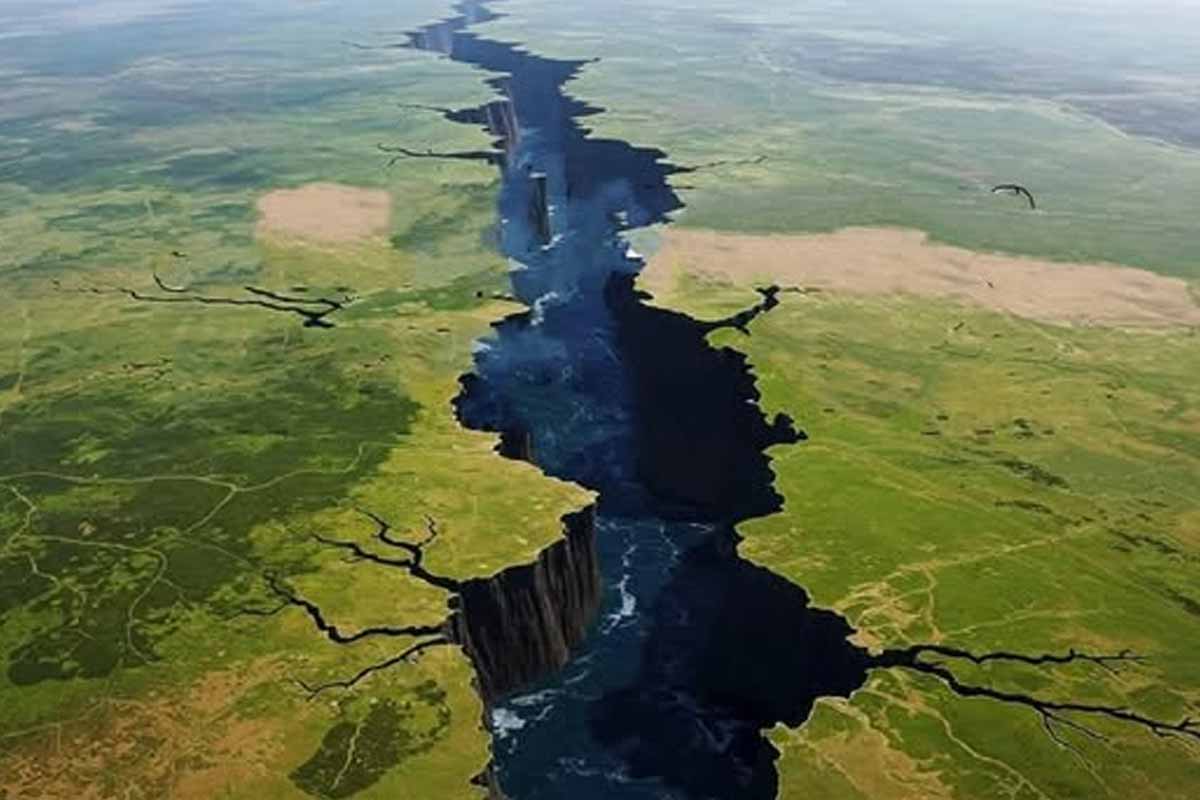You can almost hear a new ocean forming beneath the old bones of Africa. Maps feel temporary, like penciled drafts waiting for ink. Valleys breathe, mountains twitch, and the ground keeps its own quiet rhythm. Stand on the rift edge and the air tastes like flint and thunder. This story isn’t hype; it’s time moving through rock.
New ocean forming
Picture the continent exhaling along a crooked seam from Ethiopia to Mozambique. The Earth has picked a stitch to unpick. Plates nudge, hesitate, then part a hair’s breadth each year. Millimeters that feel like nothing, until you remember deep time. The rift is a scar you can trace on satellite images, a thread glinting across deserts and highlands. Geologists call the west side the Nubian Plate and the east the Somali Plate. Two neighbors slowly drifting toward separate futures. Volcanic fields flicker like pilot lights along the fault. Quakes tick through the crust like a metronome. This isn’t sudden doom. It’s a patient rearrangement, a new ocean forming in slow motion while we cook dinner and check messages.
A continent under tension
Follow the line south and you cross names that feel like chapters: Afar, Turkana, Manyara, Malawi. The rift rides through them all with a stubborn tilt. Beneath the surface, hot rock rises and thins the crust. Picture taffy warming in your hands, stretching until it threads. That stretch opens space, and the land sags into long valleys. Lakes fill the low spots, blue slices stitched by faulted walls. People live here, farm here, pray here. It’s not a museum. The ground says move and they adjust. Roads detour around fresh cracks. Engineers test new alignments. Every small fix whispers the same thing: a new ocean forming will one day take this space, but not on our clock.
Cracks you can stand beside
Some changes shout. A fissure opens across a Kenyan road after heavy rains. Cameras swarm. Locals already know the ground speaks this language. In Ethiopia’s Afar Depression, lava fields cool into black armor and steam slips from newborn vents. Earthquakes jostle shelves and steadies nerves with practice. From orbit, satellite images catch the rift widening, ridge by ridge. You can scroll the history like frames in an old film. In 2005 a long gash tore open in days, a preview of what steady strain achieves. The Red Sea and Gulf of Aden lurk at the rift’s northern doorstep, salt and patience in equal measure. Each tremor, each quiet uplift, sets the table for a new ocean forming, whether we clap or not.
Timelines the mind resists
Human calendars are laughably small next to geology. We think in seasons and budget years. The planet counts in millions. Give this rift five to ten million years and water will find the low path. The Red Sea will slide in, the Gulf of Aden will follow, and a basin will bloom. Eastern Africa won’t vanish; it will sail away like a slow ship, a cousin to Madagascar with fresh shorelines. Wildlife will reorder. Currents will trace new routes. Weather will learn new tricks. Cities that don’t exist yet will have harbors that don’t exist yet. It’s dizzying and weirdly comforting. The ground keeps evolving, with or without us. We are witnesses to a new ocean forming, lucky and small at the same time.
Living on shifting ground
Life goes on along the rift, as it always has. Farmers chase rain shadows and plant where ash makes soil generous. Drillers tap steam from the crust to light homes and clinics. Geothermal plants hum, spare and elegant against the horizon. Kids race along dusty pitches while a volcano naps beyond the goalposts. Some days shake. Some don’t. Builders learn, tweak codes, and aim for structures that bend without breaking. Science tries to listen better more sensors, clearer models, cleaner maps. Communities become experts in their own right, updating elders’ stories with fresh data and hard-won instincts. The wonder isn’t only in the spectacle. It’s in the steady human choreography around it. People cook, marry, study, dance; the Earth shifts underfoot; the day still holds. All the while, a new ocean forming writes its first, faint letters, and we trace them with careful hands.
